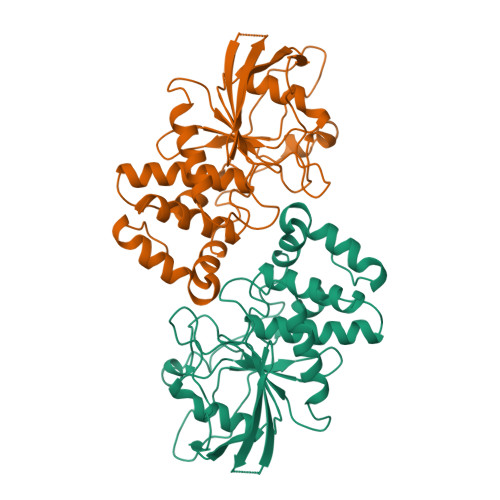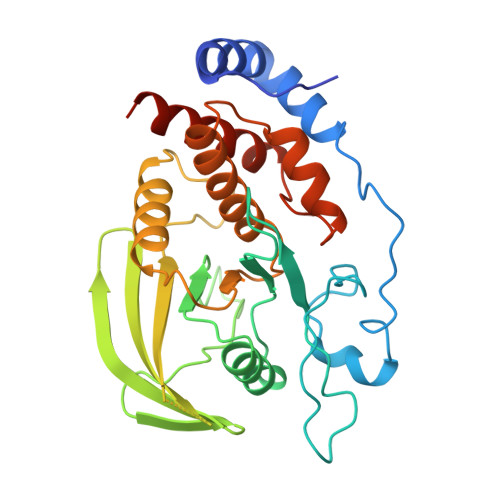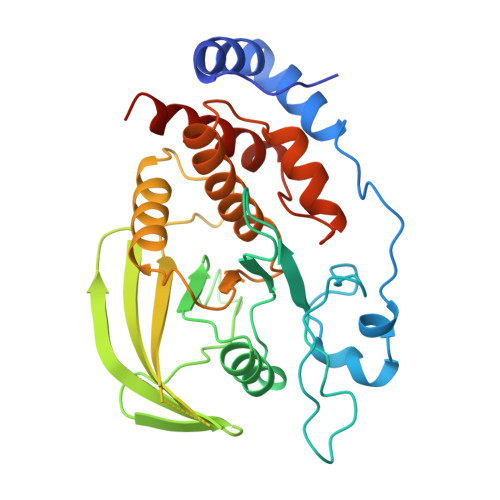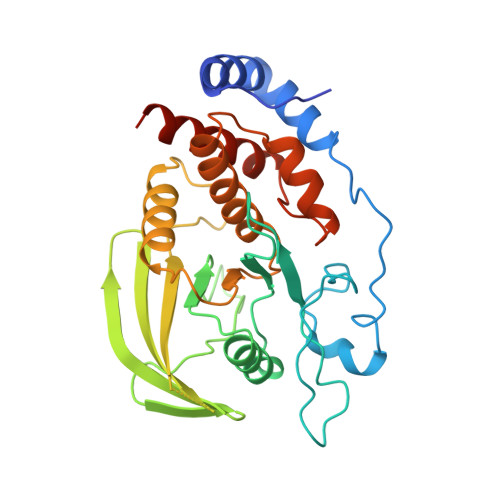Structural basis for inhibition of receptor protein-tyrosine phosphatase-alpha by dimerization.
Bilwes, A.M., den Hertog, J., Hunter, T., Noel, J.P.(1996) Nature 382: 555-559
- PubMed: 8700232
- DOI: https://doi.org/10.1038/382555a0
- Primary Citation of Related Structures:
1YFO - PubMed Abstract:
Receptor-like protein-tyrosine phosphatases (RPTPs), like their non-receptor counterparts, regulate the level of phosphotyrosine-containing proteins derived from the action of protein-tyrosine kinases. RPTPs are type-I integral membrane proteins which contain one or two catalytic domains in their cytoplasmic region. It is not known whether extracellular ligands regulate the activity of RPTPs. Here we describe the crystal structure of the membrane-proximal catalytic domain (D1) of a typical RPTP, murine RPTP alpha. Significant structural deviations from the PTP1B fold reside within the amino-terminal helix-turn-helix segment of RPTPalphaD1 (residues 214 to 242) and a distinctive two-stranded beta-sheet formed between residues 211-213 and 458-461. The turn of the N-terminal segment inserts into the active site of a dyad-related D1 monomer. On the basis of two independent crystal structures, sequence alignments, and the reported biological activity of EGF receptor/CD45 chimaeras, we propose that dimerization and active-site blockage is a physiologically important mechanism for downregulating the catalytic activity of RPTPalpha and other RPTPs.
Organizational Affiliation:
Structural Biology Laboratory, The Salk Institute for Biological Studies, La Jolla, California 92037, USA.



















